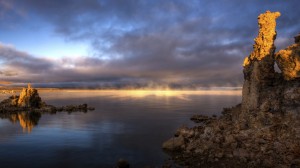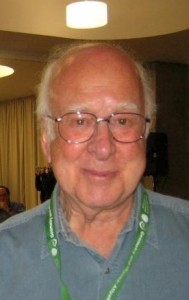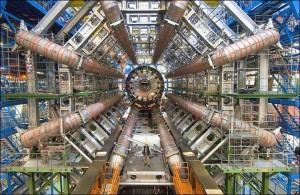Scientists Call for Global Action to Protect Coral Reefs

Black coral and barrel sponge on coral reef in Saint Lucia (Photo: Chuck Savall/Marine Photobank)
More than 2,600 scientists are calling on governments worldwide to take steps to protect valuable coral reef ecosystems.
They’ve endorsed a statement written by scientists brought together by the Center for Ocean Solutions at California’s Stanford University.
The statement was released this week to kick off the 12th International Coral Reef Symposium being held in Cairns, Australia.
“Rising sea levels, more intense storms, changes in ocean chemistry due to air and water pollution – all these stress coral reefs,” said Steve Palumbi, an expert on corals with the Center for Ocean Solutions and the chief organizer in developing the consensus statement. “At least 25 percent of the world’s coral reefs have been degraded. Because of the global origin of climate change, the only way to tackle this is through a worldwide effort.”
The statement calls on governments to take action through global initiatives to reduce emissions of carbon dioxide and other greenhouse gases, and to increase local protection of coral reefs throughout the world.

A rare moment during the process of coral bleaching. When corals are stressed by various changes in their conditions they blow out the symbiotic algae that live in their tissues, causing them to turn completely white(Photo: Ryan Goehrung/Marine Photobank)
The scientists referred to the world’s coral reefs as important ecosystems which, despite being ecologically, economically and culturally valuable, are in decline everywhere due to human-based factors such as pollution, sedimentation, overfishing and climate change, all of which, they say, are expected to rise in severity.
The statement lists changes scientists have already been observed over the last century:
- Approximately 25-30% of the world’s coral reefs are already severely degraded by local impacts from land and by over-harvesting.
- The surface of the world’s tropical oceans has warmed by 0.8°C, resulting in unprecedented coral bleaching and mortality events.
- The acidity of the ocean’s surface has increased due to increased atmospheric CO2.
- Sea-level has risen on average by 18cm.
Unless action is taken now, future impacts on coral reefs could include:
- Most corals will face water temperatures above their current tolerance.
- Most reefs will experience higher acidification, impairing calcification of corals and reef growth.
- Rising sea levels will be accompanied by disruption of human communities, increased sedimentation impacts and increased levels of wave damage.
- Together, this combination of climate-related stressors represents an unprecedented challenge for the future of coral reefs and to the services they provide to people.
The International Coral Reef Symposium, which runs through July 13, is held once every four years. Organizers say this year’s symposium will draw more than 2,000 scientists from 80 countries. They’re expected to present cutting-edge science and to share the latest advances in coral reef conservation.
Research Casts Doubt on NASA ‘New Life Form’ Claim

The Mono Lake research area where NASA said it found a new life form in 2010. (Photo: NASA)
New research throws scientific cold water on NASA’s purported 2010 discovery of a new form of life which lives and thrives off of arsenic rather than phosphorus, an important element that supports life as we know it.
In December 2010, NASA announced its researchers, led by Dr. Felisa Wolfe-Simon, had found bacteria in California’s Mono Lake that substitutes the toxic substance arsenic for phosphorus in its cell components.
To support life as we know it, six essential elements are necessary: carbon, hydrogen, oxygen, nitrogen, sulfur and phosphorus.
NASA heralded the discovery of the microorganism, called GFAJ-1, as significant because it offered an alternative biochemistry makeup with the potential to alter biology textbooks and expand the scope of the search for life beyond Earth.

Image of GFAJ-1, which according to NASA research, was grown on arsenic. (Image: Jodi Switzer Blum)
At the time, Ed Weiler, NASA’s associate administrator for Science Mission Directorate said, “The definition of life has just expanded, as we pursue our efforts to seek signs of life in the solar system, we have to think more broadly, more diversely and consider life as we do not know it.”
From the beginning, critics within the scientific community cast doubt on the validity of NASA’s findings.
One of the early skeptics, Canadian microbiologist Rosemary Redfield, from the University of British Columbia, blogged, “I don’t know whether the authors are just bad scientists or whether they’re unscrupulously pushing NASA’s ‘There’s life in outer space!’ agenda. I hesitate to blame the reviewers, as their objections are likely to have been overruled by Science’s editors in their eagerness to score such a high-impact publication.”

Image of GFAJ-1 grown on phosphorus (Image: Jodi Switzer Blum)
Redfield is an author of one of two new research papers, published in Science, which debunk NASA’s findings.
In essence, the papers find that, while the GFAJ-1 bacteria may sometimes use a very small amount of arsenic in place of phosphate, it cannot fully substitute the toxic substance for a form of the key element and that some phosphate is needed in order to survive.
In a statement sent to Agence France Presse (AFP), Wolfe-Simon responded that the data published in the new papers “are consistent with our original paper” and that she and her colleagues expect to publish new information in the next few months.
“A great thing about science is that the ability to do rigorous tests with controls provides an increasingly accurate knowledge of life and the universe that is extremely useful,” she said in the statement.
Nailing Down the Elusive Higgs Boson

Illustration of two protons beams colliding in the Large Haldron Collider. Experiments similar to this one will be analyzed for Higgs boson particle production. (© 2011 CERN – Atlas collaboration)
Although it was the Fourth of July holiday in the United States, there were plenty of fireworks in Europe, where scientists announced they’d probably found the elusive Higgs boson, a particle believed to give all objects mass.
At CERN headquarters in Geneva, two independent scientific teams – ATLAS and CMS – announced they’ve observed a new particle in the mass region around 125-126 GeV (gigaelectron volt).
But is this newly-discovered particle actually the previously-unseen Higgs boson first proposed in 1964 by British theoretical physicist Peter Higgs?
Well, they’re pretty sure it is, but can’t say with 100 percent certainty.
“We observe, in our data, clear signs of a new particle at the level of 5 sigma, in the mass region around 126 GeV,” said ATLAS experiment spokesperson Fabiola Gianotti, “but a little more time is needed to prepare these results for publication.”

Peter Higgs is best known for his theory explaining the origin of mass of elementary particles in general and the Higgs Boson in particular. (Photo: Gert-Martin Greuel via Wikipedia Commons)
CERN describes “Five sigma” as the top end of a scale particle physicists use to describe the certainty of a discovery. One sigma means the results could be random fluctuations in the data, three sigma counts as an observation and a five-sigma result is a discovery.
“This is indeed a new particle. We know it must be a boson and it’s the heaviest boson ever found,” said CMS experiment spokesperson Joe Incandela. “The implications are very significant and it is precisely for this reason that we must be extremely diligent in all of our studies and cross-checks.”
The Higgs boson is believed to play a critical role in physics, as a building block of the universe.
The theoretical subatomic particle should help explain the origins of mass and why matter has mass. It is considered to be a key component of “The Standard Model of particle physics.”
“It’s hard not to get excited by these results,” said Sergio Bertolucci, CERN research director. “We stated last year that in 2012 we would either find a new Higgs-like particle or exclude the existence of the Standard Model Higgs. With all the necessary caution, it looks to me that we are at a branching point: the observation of this new particle indicates the path for the future towards a more detailed understanding of what we’re seeing in the data.”

The Large Hadron Collider at CERN (Photo: CERN)
The results presented this week in Geneva are based on data collected by CERN’s Large Hadron Collider (LHC), the the world’s largest atom smasher, in 2011 and 2012. More 2012 LHC data is being processed, so a complete analysis isn’t expected until around the end of July.
Next week, I talk with Dr. Pierre Savard, an Atlas team member, who will give us an insider’s view of the search for most sought-after particle in modern science.
If you have any questions you’d like to ask Dr. Savard, please let me know through our comments section below.
Evidence of ‘God Particle’ Found?
Speculation is mounting that physicists at the world’s largest atom smasher plan to announce Wednesday that they’ve pretty much found the most sought-after particle in modern science.

Experiments at the Large Hadron Collider in Europe could establish the existence of the Higgs boson, a particle believed to be a building block of the universe. (AP/CERN)
Scientists in Geneva reportedly believe they have enough evidence to confirm the existence of the Higgs boson, an elusive particle believed to give all objects mass.
The discovery could reshuffle our understanding of why matter has mass which, combined with gravity, gives an object its weight.
On Monday, scientists working with the US Department of Energy’s Tevatron collider at the Fermilab in Chicago announced their data pointed to the existence of the Higgs boson, but stopped short of claiming a discovery.
European scientists might go a step further Wednesday.
According to the Associated Press, researchers at the European Organization for Nuclear Research (CERN), say that they have compiled data that show the “footprint and shadow” of the particle, even though it has never actually been glimpsed.
Two independent teams of physicists have been working to prove the Higgs boson exists, and are expected to stop short of announcing they’ve actually found the elusory particle when they make their big announcement on Wednesday.
Rob Roser, who leads the search for the Higgs boson at the Fermilab in Chicago, compared the latest development to finding the fossilized imprint of a dinosaur, telling the Associated Press, “You see the footprints and the shadow of the object, but you don’t actually see it.”
However, while scientists in Geneva might announce the discovery of an entirely new particle, Nature reports more data is needed to prove whether the new find actually is the long-awaited “God Particle.”
The magazine quotes one member of the team as saying, “Without a doubt, we have a discovery…It is pure elation!”
(Written by Dora Hasan Mekouar, Science World Online Editor)





























